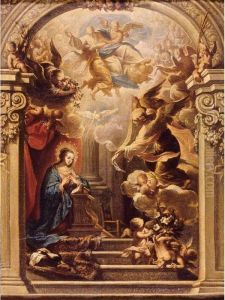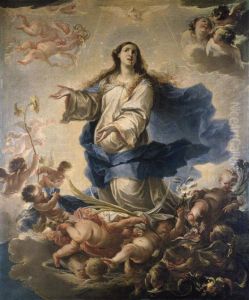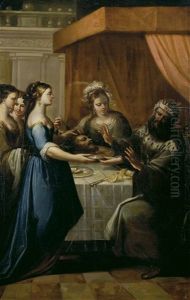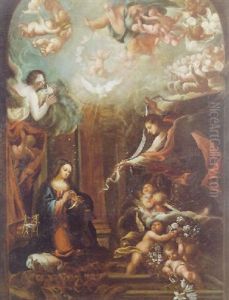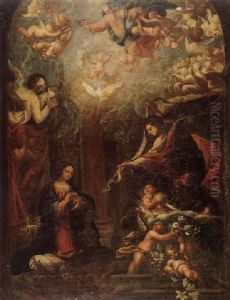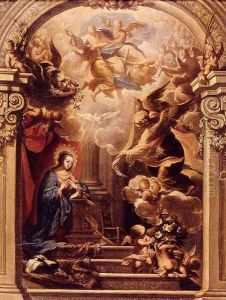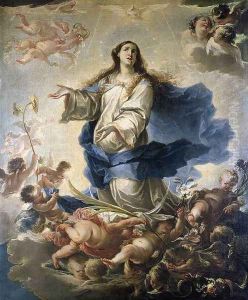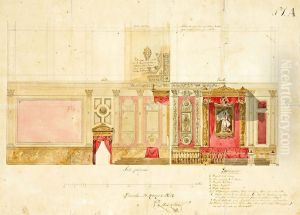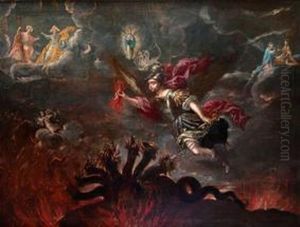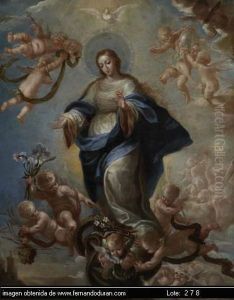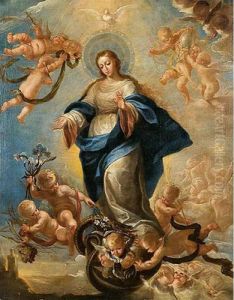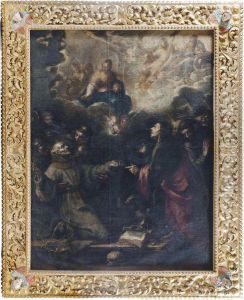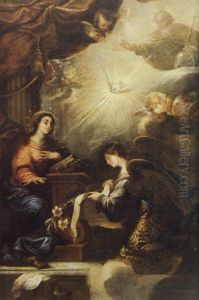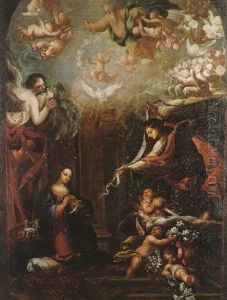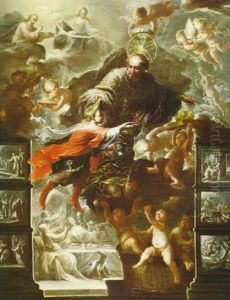Francisco de Solis Paintings
Francisco de Solis was a Spanish painter, born in the 1620s in Madrid, Spain. His exact birth date is not clearly documented, but he became active during the Spanish Baroque period, a time characterized by dramatic use of light and shadow, rich colors, and intense emotional expressions within art. Solis is particularly known for his religious paintings, which were in high demand during the Counter-Reformation, as the Catholic Church sought to use art as a means for religious instruction and inspiration.
Solis trained under the guidance of Francisco Rizi, a court painter to King Philip IV, and later under Juan Carreño de Miranda, another prominent figure in the Spanish art scene. These experiences allowed him to develop a style that combined the influence of his teachers with his own artistic sensibilities.
Throughout his career, Francisco de Solis worked on various important commissions, including works for churches and religious institutions. His paintings often featured narratives from the Bible, with an emphasis on the New Testament. He was adept at capturing the spiritual fervor and mysticism that was expected of religious artworks during that era.
Notable among his works are his depictions of scenes from the life of Christ, including the Adoration of the Shepherds and the Crucifixion, which highlight his skill in portraying divine and human figures with a sense of realism and emotional depth.
Solis's contribution to Spanish Baroque art was significant, though he is not as widely recognized as some of his contemporaries like Diego Velázquez or Bartolomé Esteban Murillo. His works can be found in various churches in Spain and in art collections that focus on Spanish Baroque paintings.
Francisco de Solis died in 1684, leaving behind a body of work that, while not extensive, represents the religious and artistic values of 17th-century Spain. His paintings continue to be studied for their stylistic qualities and as examples of the Counter-Reformation's impact on the arts.
